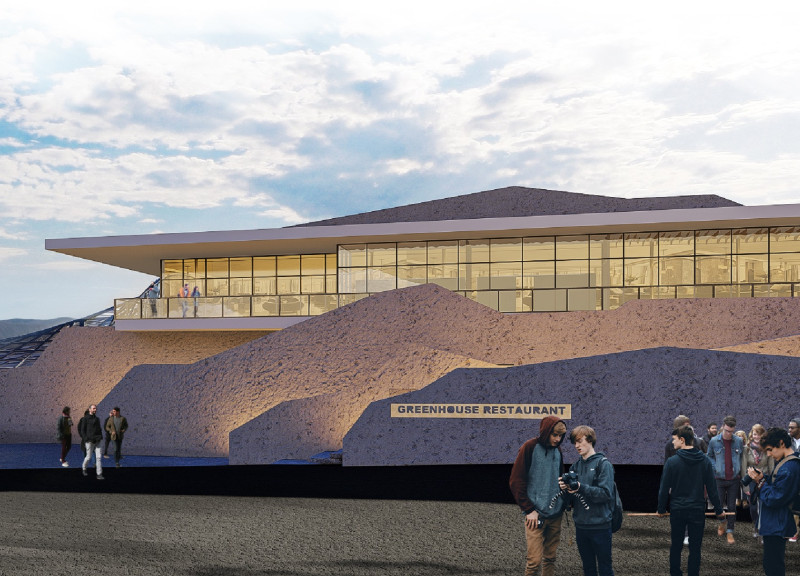5 key facts about this project
The Iceland Green House Restaurant is located in a region characterized by snow and ice, where access to locally grown food is challenging. The project centers around the theme of "Germination of Life," merging agricultural practices with the dining experience. It offers a sustainable approach to food production and consumption, accommodating both nature and people.
Conceptual Framework
This project draws inspiration from the biological process of seed germination. Each part of the building aligns with a specific stage in this process. The greenhouse functions as the Seed Coat, supplying a protective environment for plants. The kitchen acts as the Hypocotyl, essential for preparing food that comes from the greenhouse. The restaurant area is likened to the Cotyledon and Leaf, allowing guests to enjoy the fresh produce cultivated on-site.
Spatial Configuration
The layout of the restaurant integrates both indoor and outdoor spaces. One half of the dining area is within a central structure, while the other half extends outward, resembling a leaf emerging from a seed. This arrangement provides diners with captivating views of the landscape, including Haverfjall and Mývatn Nature Baths. It fosters a connection between the dining experience and the surrounding natural beauty.
Material Considerations
The design incorporates ETFE and membrane systems, which are suitable for a greenhouse environment. ETFE is lightweight and transparent, allowing natural light to reach the plants, which is vital for their growth. The membrane systems add structural support and help with energy efficiency. The choice of materials is significant in enhancing the building's overall functionality and reflects a commitment to sustainable practices.
Design Integration
A key aspect of the restaurant is the flow of energy within the space. Visitors actively contribute to the greenhouse's vitality, creating a relationship between the building and its users. This interaction brings the community together and emphasizes the importance of local food production. The design engages patrons in a meaningful way, encouraging awareness of sustainability and ecological responsibility while providing a functional dining experience. Every element contributes to a space that is both practical and aligned with nature's rhythms.






















































